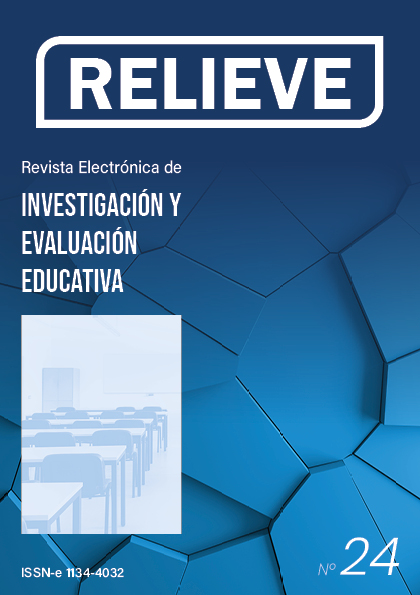Dimensional structure of 21st century competences in university students of education
DOI:
https://doi.org/10.7203/relieve.24.1.12548Keywords:
21st century competences, ICT competences, high skills, university students, personal factorsAbstract
The new Knowledge Society requires new competences, which are known as 21st Century Competences. These competences are subdivided into competencies of higher-order thinking and competences in information and communication technologies. The aim of this article is to determine the dimensional structure of 21st century competences, together with key personal factors in this regard. This is a correlational study, based on a survey design, whose sample is constituted by students of the degrees of Pedagogy and Social Education at University of Valencia, selected by a non-probabilistic and accidental sampling, collecting the information by means of two questionnaires. The results point out that the competences for the 21st century are composed of two subsets, the competences of higher-order thinking and the ICT competences, which form a whole. In addition, it has been found that personal factors have a significant impact on this structure. It is suggested that education policies should address both aspects, in order to train citizens included in the Knowledge Society.
Downloads
Downloads
Published
How to Cite
Issue
Section
License
The authors grant non-exclusive rights of exploitation of works published to RELIEVE and consent to be distributed under the Creative Commons Attribution-Noncommercial Use 4.0 International License (CC-BY-NC 4.0), which allows third parties to use the published material whenever the authorship of the work and the source of publication is mentioned, and it is used for non-commercial purposes.
The authors can reach other additional and independent contractual agreements, for the non-exclusive distribution of the version of the work published in this journal (for example, by including it in an institutional repository or publishing it in a book), as long as it is clearly stated that the Original source of publication is this magazine.
Authors are encouraged to disseminate their work after it has been published, through the internet (for example, in institutional archives online or on its website) which can generate interesting exchanges and increase work appointments.
The fact of sending your paper to RELIEVE implies that you accept these conditions.














